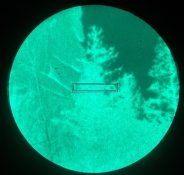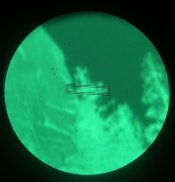I have a couple of thoughts which, if you can bear reading my post, might be worth thinking about, or not.
The question at hand is whether it makes any difference in the sharpness of a print whether we place a piece of enlarging paper under the grain focuser or not. The whole point of using a grain focuser is to focus on the grain, and thereby assure ourselves that the print is sharp because the grain is sharp. We do not use a flower focuser or a tree branch focuser. Bill looked at the sharpness of a flower or some part thereof (call it flower stems), and Greg looked at some tree branches. I don't know how or whether either Bill or Greg determined that the flower stems and tree branches were in focus in their negatives. If they are not in focus in the negative, they will not be in focus in the print. Let's say they are not in focus. It is entirely possible that Greg can tell that his tree limbs are equally blurry on all his prints. I just thought it might be easier to tell the difference, if there is one, between blurry and sharp grain, than between blurry and less blurry tree limbs. Bill is better off because he has a sequence of flower stems to examine, e.g. blurry, blurry, blurry, less blurry, less blurry, less blurry, blurry, blurry, blurry. Again, I just thought it might be easier to tell the difference, if there is one, between blurry and sharp grain, than between blurry and less blurry flower stems. Which is why I think we would be better off examining grain, because the sharpness of the grain is not dependent on the sharpness of the subject matter in the negative. I don't want to speak for waltw, but I think he may have been thinking along the same lines when he suggested Bill increase magnification from 10x to 16x.
Moreover, there is also a difference in the sharpness of the grain among developers, with solvent developers having blurrier grain than something like Rodinal. I'd suggest testing with Rodinal negatives, because the difference, if any, would be more pronounced with Rodinal negatives than with solvent developer negatives. I don't know about you, but for me prints made from negatives developed in Rodinal really jump out (for better or worse). If there is no difference with Rodinal negatives, there will be no difference with solvent developer negatives.
And then there is the whole condenser/diffusion enlarger angle. If there is a difference in the sharpness of a print if we place a piece of enlarging paper under the grain focuser, it is more likely to show up in prints made with a condenser enlarger than with a diffusion enlarger.
A perfectly reasonable response to this post is to tell me to quit quibbling, and if I don't like Bill's and Greg's tests, then do my own tests.






